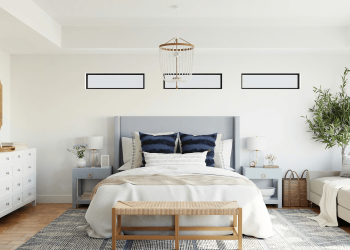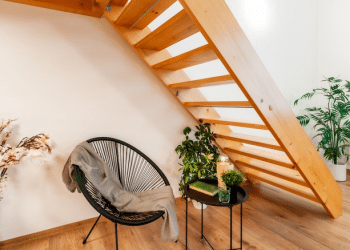Table of Contents

In the past few years, homeowners have dedicated unprecedented time and resources to home improvement projects. This surge, initially driven by the COVID-19 pandemic, saw individuals utilize lockdown periods to embark on long-postponed renovations.
“Finally having the time for it” emerged as the leading motivator for these undertakings in the United States. Concurrently, rising real estate prices across many Western countries encouraged homeowners to enhance their current properties rather than purchase new ones.
The trend was evident in 2020, when garden landscaping topped the list of home improvements in the United States, while European homeowners focused on projects like home decoration in France and bathroom upgrades in the UK. The impact on the DIY retail market was substantial, with the U.S. home improvement market experiencing a remarkable 12 percent growth, the largest year-over-year increase in a decade.
Beyond traditional renovations, the pandemic period also sparked interest in high-tech home solutions. Smart home features such as high-speed internet, security cameras, and interconnected devices have become almost as common as conventional projects like indoor painting and garden landscaping.
Expectations indicate a significant shift in home improvement priorities, with nearly 500 million homes worldwide expected to incorporate smart home technology by 2025.
As we navigate 2024, understanding the best home improvement projects to increase property value is crucial. Factors such as local market conditions, potential buyer preferences, and specific property characteristics all play vital roles in property investment.
For example, a loft conversion could add approximately 15% to a home’s value, similar to off-street parking, kitchen redesigns, and garage conversions. However, the optimal renovation for value addition varies significantly based on individual circumstances.
Before delving into specific projects, it’s essential to assess your property’s starting point to determine the potential value increase against the renovation costs. This evaluation will help ensure that your investment in home improvement is both strategic and worthwhile. Let us now take a look at some of the home improvement projects that could increase the value of your property.
1. Loft Conversion
A loft conversion can increase the sale price of a home by up to 15%, especially in urban areas where floor space is limited. For homeowners looking to diversify their investments, fractional ownership of high-value properties is a viable option.
In 2022, Barbour ABI found urban homeowners are more likely to convert loft space than those in rural areas. While converting up to 50 cubic meters of loft space without planning permission is more cost-efficient, larger projects may require planning approval. The average cost of a loft conversion is approximately £22,000.
2. Insulation and draft-proofing
Adding insulation to your loft and walls, as well as draft-proofing windows and doors, enhances energy efficiency and home value. For DIY projects, loose-fill or batt insulation is an option, as is professional spray foam insulation. Upgrading to double-glazed windows and uPVC frames further improves thermal comfort.
3. Redecorate
Redecorating remains one of the most cost-effective ways to increase property value. Opt for neutral colors to attract potential buyers and breathe new life into your home. Fresh paint can make a substantial difference without a hefty investment.
4. Fix superficial defects
While minor issues might not be deal-breakers, they can give the impression of neglect. Address peeling paint, dirty walls, dripping taps, squeaky floors, moldy sealant, limescale buildup, poorly fitted laminate flooring, and broken lightbulbs to maintain a well-cared-for appearance.
5. Improve the front door
First impressions matter. A clean, freshly painted front door with new hardware, such as a doorknob or house number, can significantly improve curb appeal. To attract potential buyers, strive to make your front door more appealing than your neighbors’.
6. Declutter
A tidy, clutter-free home appears more spacious and inviting. Pay particular attention to the kitchen and bathroom, and consider whether rooms have too much furniture. Less is often more when it comes to creating a sense of space.
7. Optimize heating and lighting.
Ensure your home feels warm and inviting during viewings. Preset the temperature and use good lighting, especially on gloomy days. If you have scheduled showings for the evening, turn on the exterior lights to create a welcoming atmosphere.
8. Boost Garden Appeal
Invest some time in your front garden to create a pleasant first impression. In the backyard, think of the garden as an extension of your living space. Trim borders, clear paths, and cut back overgrown trees or bushes. Consider adding decking to create a functional outdoor area.
9. Incorporate Smart and Energy-Efficient Features
Modern buyers value smart home technologies. Highlight features like fiber optic cables, and consider installing systems like multi-room music platforms. Energy-efficient upgrades, such as double glazing and smart heating controls, can also boost your property’s value and appeal.
10. Bigger Projects
Larger renovations, such as loft conversions, adding a conservatory, or garage conversions, can significantly increase property value. These projects provide additional living space and appeal to buyers looking for more room.
11. Enhancing curb appeal
Enhancing your home’s exterior can increase its value by 2–3%. Simple upgrades like painting the front door, adding plants, and improving landscaping can make your property more attractive. Considering the demand for student accommodations, innovative solutions like student rentals can add significant value.
12. Upgrading Kitchens
A kitchen renovation can increase property value by 5–15%. Consider adding an island, upgrading appliances, installing new countertops, and optimizing storage. An effective kitchen layout enhances usability and attracts buyers. If a full renovation is not feasible, smaller updates like painting cabinets, replacing handles, or improving lighting can make a big difference. Keep surfaces clutter-free and clean to enhance the overall appeal.
13. Adding/upgrading Bathrooms
An additional bathroom, especially on the ground floor, can boost your home’s value by 4–5%. A reasonable investment can achieve this convenience, which appeals to buyers. Bathrooms should look fresh and hygienic. Re-grouting, eliminating limescale, and updating taps can rejuvenate the space. Consider painting walls in neutral colors and adding a new shower curtain or glass screen for a polished look.
14. Embracing Open-Plan Living
Open-plan living areas are highly sought after and can raise property value by £20,000 to £48,000. These spaces create a sense of spaciousness and promote social interaction, making homes more attractive to modern buyers.
15. Creating off-street parking
In areas with limited parking, adding off-street parking can boost your property’s value by up to 13%. Ensure you meet legal requirements and consider the costs involved in making a worthwhile investment.
16. Investing in Garden Offices
With the rise of remote work, garden offices have become popular. These structures can enhance property value and provide a dedicated workspace. Consider materials, design, and functionality to create an appealing office space.
17. Addressing structural issues
Before starting cosmetic improvements, address any structural defects. Fixing cracks, water damage, and roofing problems is essential to maintaining property value and ensuring the effectiveness of other upgrades.
Conclusion
Before starting any renovation, assess your budget, timeline, and goals. Obtain quotes from multiple contractors and consider financing options such as Green Homes Grants, Renewable Heat Incentive (RHI), and the Smart Export Guarantee (SEG) for energy-efficient projects. Proper planning ensures that your home improvements are both financially viable and aligned with your long-term goals.









